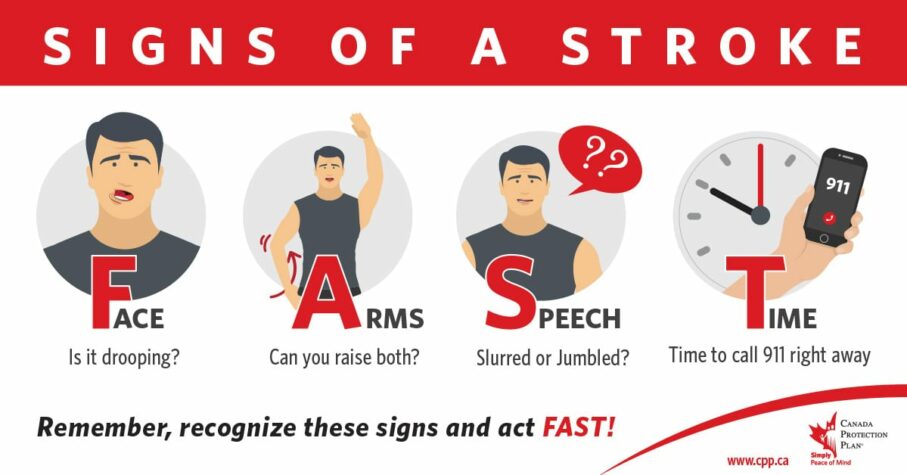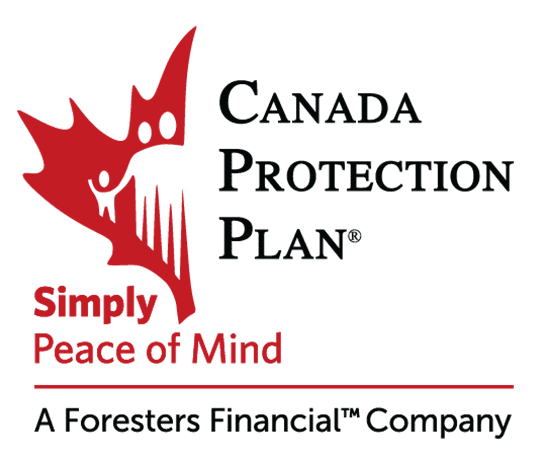
June is Stroke Awareness Month in Canada where organizations and individuals participate in raising awareness and funds. These funds help support those that suffer from the effects of a stroke and contribute to groundbreaking stroke research.
Stroke Awareness Month was created by the Heart and Stroke Foundation of Canada, and for over 60 years they have dedicated June to educating Canadians about the importance of fighting heart disease and stroke – thus helping to save lives and improve the quality of life for many.
More than 400,000 Canadians are living with long-term disability from the effects a stroke.1 This number calls for us to educate more people about the potential risk of being diagnosed with this disease, especially women. Strokes disproportionately affect women with 59% of stroke deaths occurring in the female population.1
There is a study gap to suggest that women are under-researched and underdiagnosed when it comes to strokes.2 In fact, two-thirds of clinical heart disease and stroke research is conducted on men.3 Yet, women have higher mortality rates and more severe outcomes following a stroke when compared to men.4 Heart disease and stroke is the number one cause of premature death for women in Canada, which means you/your partner, your mother and grandmother may be at a greater risk.3
It’s important to share that we’ve made a lot of advancements in diagnosing and treating stroke patients. However, it’s also important to educate the ways to prepare if this disease was to occur, and with knowledge we can better protect ourselves and our loved ones.
What is a stroke?
A stroke happens when blood stops flowing to any part of your brain, damaging brain cells.5 The effects of a stroke depend on the part of the brain that was damaged, and the amount of damage done.5 There are three types of strokes that can occur:
Ischemic stroke – caused by a blockage or clot in a blood vessel in your brain.5
Hemorrhagic stroke – caused when an artery in the brain breaks open. The interrupted blood flow causes damage to your brain.5
Transient ischemic attack (TIA) – caused by a small clot that briefly blocks an artery. It is sometimes called a mini-stroke or a warning stroke.5
What are the signs of a stroke?
Use the FAST method to determine quickly if you are experiencing a stroke.6 If you believe you are, call an ambulance immediately, do not try to drive yourself to the hospital.
Face– is it drooping?
Arms– can you raise both?
Speech– is it slurred or jumbled?
Time– if you observe any of these signs, it’s time to call 9-11 right away.
In addition to the FAST method, there are also more detailed symptoms to watch out for if you think you could be experiencing a stroke:
- Severe headache with no known cause.
- Sudden numbness or weakness in the face, arm or leg – especially if you’re experiencing this on one side of the face or body.
- Confusion or have trouble speaking or understanding speech.
- Sudden vision problems in one or both eyes.
- Difficulty walking or dizziness, loss of balance or problems with coordination can also be a sign of a stroke.
What are stroke risk factors?
Consider using the Heart and Stroke Foundation’s risk assessment tool to gain valuable insight about your personal risk of having a heart attack or stroke. Discover what you can do to reduce your risk and how to increase your overall life expectancy.
Gender – women have unique risk factors that make them more likely to suffer a stroke, which can include higher levels of estrogen, the use of birth control, pregnancy, menopause, and more.7
Age – while you can have a stroke at any age, the older you are, the higher your risk of stroke.7
Family and medical history – if you have had a family member suffer a stroke, you will be at an increased risk of having one yourself.7
Ethnicity – if you have an Indigenous, African American or South Asian heritage, you are more likely to have higher blood pressure, diabetes and other stroke risk factors at a younger age.7
Personal lifestyle – having less access to healthy food and health services can increase chances of having a stroke.7
How to prevent a stroke?
Unfortunately, there are certain risk factors that cannot be changed. Yet, there are also many things in your control that you can do to decrease your chance of having a stroke. According to the Heart and Stroke Foundation, almost 80% of premature stroke and heart disease cases can be prevented.8
Reduce stress: Almost everyone experiences stress and it can often be difficult to recognize. Managing day-to-day stress is one way to lower your blood pressure and reduce your chance of stroke. Start finding ways to reduce stress in your life and live a more balanced lifestyle.
Maintaining a healthy weight: Losing weight and maintaining it can help to reduce your risk of high blood pressure, high cholesterol, and diabetes. Over 60% of adults are either overweight or obese.9 Eating a healthy diet including more fruits and vegetables, while eating less processed foods can make a difference.
Physical exercise: Get at least the recommended 30 minutes of daily physical activity every day. Whether it’s indoors or outdoors, there are plenty of ways to get some exercise into your daily routine.
Alcohol use and smoking: Avoid drinking excessively since this is a risk factor for high blood pressure and stroke. For middle aged men and women, smoking can triple the risk of dying from heart disease and stroke.10 Take the appropriate steps to quit your smoking habit once and for all.
If a stroke happens, how can you be treated?
Surgery – Emergency treatment for stroke depends on whether you’re having an ischemic stroke or a hemorrhagic stroke. There are a number of surgical techniques that doctors use to help those who have suffered a stroke.11
Medications – There are medications that can be taken to help alleviate the effects of a stroke:12
- Blood thinners
- Blood pressure lowering medications
- TPA (tissue plasminogen activator)
- Cholesterol medication
Rehabilitation – Following a stroke, starting the rehabilitation process (physical, occupational, speech, psychological, vocational, cognitive) as soon as possible is important, because it “retrains” your brain. After being treated, you may not have the same mobility or be able to perform the same functions you once did. Whether it’s support from loved ones or building new routines to live independently, planning can help.
How long does it take to recover from a stroke?
A stroke can take several weeks or years to recover from fully. According to the National Stroke Association:13
- 10% recover almost completely.
- 25% recover with minor impairments.
- 40% experience moderate to severe impairments that require special care.
- 10% require long-term care in a care facility.
A stroke can cause long-term disabilities and recovery takes time. You may need income replacement while you’re taking time off work or funds to help aid your recovery such as hiring a caregiver.
If you are unable to work following a stroke, note that employer’s insurance benefits can be capped, and Employment Insurance may only last a maximum of 15 weeks (depending on the province). Should you be deemed able to work, you will not be covered by disability insurance.
You may want to plan ahead and consider purchasing Life and Critical Illness Insurance. Both can give you financial protection and peace of mind. If you were to pass away, Life Insurance protects your loved ones with a death benefit. Critical Illness Insurance provides you with a lump sum while you’re alive, should you be diagnosed with an illness that is covered under the plan. Each of these options are available as No Medical when applying, which means no medical exams are required.
Ways to honour Stroke Awareness Month
Volunteer – The Heart and Stroke Foundation always needs volunteers for various awareness and fundraising events throughout the year.
Make a donation – Every little bit helps! Consider donating to the Heart and Stroke Foundation. Whether it’s funding groundbreaking research or supporting someone dealing with the long-term effects of a stroke, a generous donation, big or small can make a difference.
Invite a speaker – Whether it’s to your school or workplace, get in touch with someone who has lived with the effects of a stroke and invite them to share their story.
Fundraise – Participate in one of many fundraising initiatives organized by the Heart and Stroke Foundation including: Jump Rope for Heart, Big Bike, The Heart and Stroke Lottery, Ride for Heart, or start your own fundraiser! Find the full list of events.
Leave a Legacy to an organization – If you have a life insurance policy, you can assign the Heart and Stroke Foundation as the beneficiary of the policy. Learn more about how to leave a legacy.
Is critical illness insurance and life insurance right for you?
A lot of progress has been made to help those who have had a stroke and are dealing with the effects. However, it’s still important to be prepared if you unexpectedly had a stroke and needed to protect yourself while you’re recovering. Critical illness insurance can provide the peace of mind that you’ll have the right financial support during a difficult time.
Speak with your advisor or contact Canada Protection Plan for no-obligation life insurance and critical illness insurance quotes.
SOURCES:
- 1 https://chartwell.com/en/blog/2018/06/stroke-awareness-and-prevention-for-women
- 2 https://www.heartandstroke.ca/women/what-we-are-doing
- 3 https://www.heartandstroke.ca/what-we-do/media-centre/stroke-report
- 4 https://www.heartandstroke.ca/what-we-do/media-centre/news-releases/stroke-more-deadly-for-women-and-poses-a-greater-burden
- 5 https://www.heartandstroke.ca/stroke/what-is-stroke
- 6 https://www.heartandstroke.ca/stroke/signs-of-stroke
- 7 https://www.heartandstroke.ca/stroke/risk-and-prevention/risk-factors-you-cannot-change
- 8 https://www.heartandstroke.ca/stroke/risk-and-prevention
- 9 https://www.heartandstroke.ca/get-healthy/healthy-weight
- 10 https://www.heartandstroke.ca/stroke/risk-and-prevention/lifestyle-risk-factors
- 11 https://www.mayoclinic.org/diseases-conditions/stroke/diagnosis-treatment/drc-20350119
- 12 https://www.heartandstroke.ca/stroke/treatments
- 13 https://www.healthline.com/health/stroke/recovery#outlook







